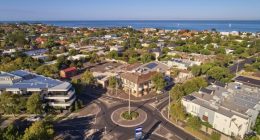
Spanish director J.A. Bayona has gone from prehistoric blockbusters with Jurassic World: Fallen Kingdom and mega-budget trips to Mordor with Amazon’s The Rings of Power (he directed the first two episodes). Now, he returns with something a little different. Society of the Snow, a survival thriller about the Uruguayan 1972 Andes flight disaster and based on Pablo Vierci’s book, comes from Netflix and is set to close the 2023 Venice Film Festival out of competition on Saturday. But it also marks the director’s return to his native Spanish language for the first time in 16 years, since his 2007 breakout The Orphanage.
The disaster, which saw a plane of 45 mostly young rugby players from Uruguay crash in the Andes, with only 16 people surviving after 72 days in the snowy environment and after having been forced to take extreme measures — including cannibalism — to stay alive, has been put to screen before (most notably Frank Marshall’s 1993 film Alive). But Bayona says his is the first to tell the story of the entire “society” on board the plane and is the first that involved the survivors and the families of those who died, to the extent that they allowed the film to use their real names.
Speaking to The Hollywood Reporter, Bayona discusses being first inspired to make Society of the Snow while researching his 2012 real-life disaster thriller The Impossible, how he managed to convince the survivors that he was going to handle their story sensitively, actually shooting in the very same spot where the accident took place and how it feels to have helped launch the career of Spider-man himself, Tom Holland (who Bayona likens to Tom Hanks).
How did it feel to make your first film in Spanish after so long?
It actually wasn’t the plan, because I’ve been trying to look to get the finance to do this film for many, many years. In so many interviews, I’d always end saying, hopefully my next movie will be in Spanish. But it took us 10 years to find financing, and it was Netflix who finally were brave enough to allow us to tell the story with the level of ambition that we were looking for — in Spanish, with local actors, in the same locations where the story took place and in the same conditions. So that was why it took so long, because we really wanted to do it right.
So were you already thinking about this film when making The Impossible?
To give you an idea, the title of The Impossible comes from the book Society of the Snow. I was researching human catastrophes when Pablo Vierci’s book was published in Spain, and the book was actually a great help in order to understand what The Impossible was about. And I remember reading a paragraph in the book where the word “impossible” is repeated seven times. And I thought it was a great title for that film. And then on the last day of shooting The Impossible, we bought the rights for Society of the Snow.
The story of this disaster has obviously been told before. So did you feel like it needed a different perspective?
I had the impression when I finished Pablo’s book that what was in that novel was something I hadn’t seen in a film. He was great at getting into the minds of the characters and explaining not only the facts but what happened to them on the inside. And then we found a perspective that gave me the key to tell the story in a way that I hadn’t seen before.
How closely did you follow the book?
The book was the origin. At the heart of the book, there is this message that says that when everything has been taken from someone, you still have chance of deciding what to do — why do you want to live? For whom do you want to die for? From there, we did interviews with all the survivors. We had over 100 hours of recordings. And then we kept in contact with the survivors throughout the shoot. All the actors were in contact with the survivors and the families of the deceased. So the shoot became like an exploration looking to answer these big questions. We were writing the story every day on set.
Society of the Snow is very sensitively told, particularly regarding the emotional toll faced by the survivors in doing what they had to do to stay alive. How did you convince the survivors and their families that you were going to handle it sensitively and not in an exploitative way?
I was worried about how I was going to show that. But the fact that I was putting the point of view from the other side made them very interested. I think somehow it’s the first time we’re telling the story of the whole society and that was very important, not only for the survivors but their families. Keep in mind that this is the first time that we have the permission from all the families to use their real names.
Have the survivors and their families seen the film?
Yes, they saw it a couple of months ago. As you can imagine, I was very nervous. But I think it was the first time that we got a unanimous answer from all of them. Because they’re all so different — a very solid group but each has their own personality and are very strong characters. But they really liked how close it was to the reality of the story. They had the impression of being back in the mountains, because they recognized the geography.
So you actually shot where it happened?
We made a big effort to shoot in the same place where it took place. We shot in a ski station in Spain but went three times to the Andres to shoot scenes.
Was sort of filmmaking obstacles does shooting in the Andes create?
My first journey was really because I wanted to know exactly what it was like to be there and what they went through. It was more about understanding the context. You cannot tell this story without telling the context. The second time I went I was already with my cameras and some actors. We only shot few scenes, because it’s a very dangerous place. And we were there in the spring, when they were actually there. Everything had to be very much under control because there was the risk of avalanches all the time. We shot scenes very quickly, but it gave us the trickery to mix them with the scenes shot in Spain.
Did avalanches take place while you were up there?
There were some, but we were surrounded by experts and mountaineers. We never went to the really dangerous areas. But it’s an unbelievable place. One of things that I like about this story is that it takes place somewhere where life is not possible. So they needed to reinvent life, they needed to reinvent the links between them, their beliefs, their customs. So from the moment you recreate a society from scratch, it’s a sign of who we are or who we want to be. And that’s what makes the story so inspiring. The whole film is a journey into dark and then right in the center of the earth, we emerge — literally — to something that starts to be like a journey to the light. And they were able to find light in the in the worst of places that you can imagine.
You’ve got an incredible young group of actors. Are they already established faces or newcomers?
We wanted to tell the story with local actors, so we went to Uruguay. It’s a small country so the industry there is very small. So we also looked in Argentina. You also need to realize that the people were really young — most from 18 to 25, 26. You don’t find actors in Uruguay or Argentina with that level of experience, which made the journey more inspiring for all of us. We had this bunch of kids making their first film. And what they went through was so hard — we rehearsed for two months and then shot for about five months. So they spent seven months away from home, very far away, and they went through a small portion of what the survivors went through — the cold, the hunger. They lost a lot of weight — we shot chronologically. What I think it very beautiful about what happened is that they created their own society, taking care of each other.
Having now shot your first film in Spanish after so long, are you hoping to do more soon?
I live in Spain, and I’m very lucky to have a position in both industries. In Spain I feel like I’m home, but having the chance to shoot big films in Hollywood is great. So I’m glad to be in this weird space. It’s great for me.
You may be launching several new careers with Society of the Snow, but how does it feel to have helped launched the career of Tom Holland with The Impossible? Are you still in touch?
We talk from time to time. And I’m so happy to see what he’s doing right now. Tom, from the very beginning, I knew he was going to be a great actor. But with the charisma he has, he has something very special. He’s very likeable, and you have an immediate sense of empathy towards him. I see him a little bit like Tom Hanks. He feels sometimes very light but very human at the deepest of his soul. So hopefully he will have a career as spectacular as Tom Hanks. For now, he’s doing a great job.
Interview has been edited and condensed for clarity.
Read More: World News | Entertainment News | Celeb News
Hollywood








